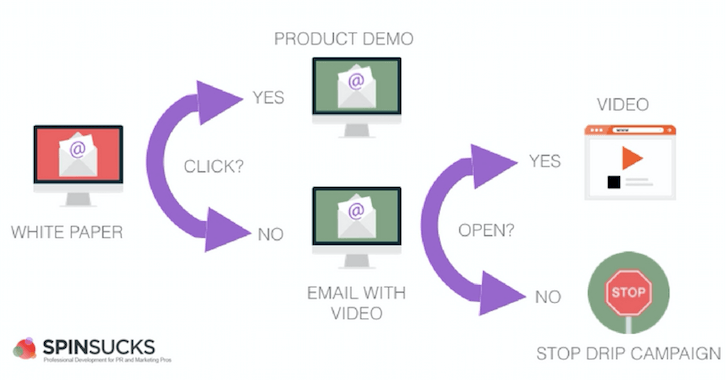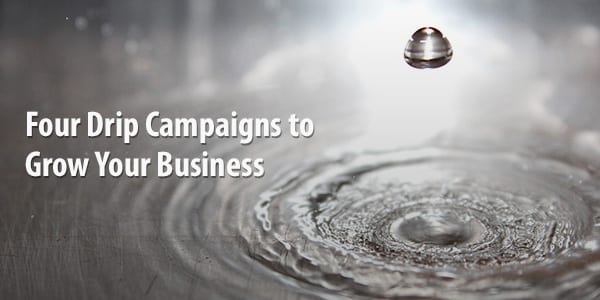Email marketing has gotten a bad rap over the years.
You know exactly what I mean. How many of you truly love your inboxes? Mine is the bane of my existence (though SaneBox, FTW!). And it seems like, for every unsubscribe link you click, five more emails appear in its place.
Not to mention, the emails that are addressed to the fake names you used to sign up for something and suddenly companies that are 100 times removed are emailing you.
NO WONDER we all hate email…and email marketers.
But, if you have an email plan that is interesting and valuable, it works better than just about any other marketing tactic. Because, even though we all hate our inboxes, we do read our emails. Daily. And the ones that are good? They get our extra time and devotion.
The hard part of email marketing, of course, is getting people to opt-in to your email list, and allow you into their inbox. It’s a huge privilege to be given the right to email your customers and prospects. In return, they’re expecting you to make it worth their while. That means sending them compelling, relevant content on an ongoing basis. Which is where email drip campaigns come in.
What is an Email Drip Campaign and Why Should You Care?
An email drip campaign is a progression of marketing emails that are sent out automatically on a set schedule.
You may also have heard them called email nurture campaigns, drip marketing, automated email campaigns, or lifecycle emails.
Regardless of what you call them, they involve “dripping” small amounts of information, typically through email, to sales prospects, over time, based either upon the actions they take or a distribution schedule you set.
Unless your business is based entirely upon convincing consumers to make impulse purchases of your product at the checkstand, it’s important you build a relationship with your prospective buyers so you are top-of-mind when they are ready to make a purchase. Similarly, you don’t want to neglect your existing customers—they’re often your best prospects, as well as potential brand advocates.
Despite a revolving carousel of blog posts proclaiming email’s death—not to mention the hundreds of “email killer” apps, email is still one of the most effective tools in a marketer’s arsenal. Consider these stats:
- 58% of adults check their email first thing in the morning.
- B2C marketers who send automated emails see conversion rates as high as 50 percent.
- 24% of Americans believe they check email “way too much.”
- 61% of consumers like to receive weekly promotional emails and 28% want them even more frequently.
- 95% of people who have opted in to receive email messages from a brand find these messages somewhat or very useful.
- 78% of successful marketers cite marketing automation systems as most responsible for improving revenue contribution (Source: The Pedowitz Group Lead Generation Marketing Effectiveness Study)
Now that you’ve seen how email can provide an easy and cost-effective way to reach these audiences with messages targeted to their specific needs and challenges, let’s walk through a practical example of what a simple drip campaign might look like.

- Jennifer provides her email address and joins your list in order to download a white paper from your website.
- You send her an email with a link to the white paper.
- From here, your campaign forks into two paths, depending upon the action she takes with the email.
If she opens the email and clicks through to download the eBook, her next step would be to receive an email that pitches her a product demo.
- If she opens the email, but doesn’t click on the link to download the eBook, she receives another email that shares a more easily consumed piece of content, such as a short video, to reignite her interest in the topic.
- If she doesn’t open the email, the drip campaign stops and she’s removed from your active subscriber list.
The good news is an email drip campaign doesn’t require you work with an expensive marketing or design firm. This entire process, with the rules as to how your email recipient’s actions influence the campaign, can be easily and effectively automated through a simple email automation tool, such as Mailchimp, ActiveCampaign, HubSpot, or Infusionsoft.
4 Drip Campaigns to Grow Your Business

1. Welcoming
We’ve been emailing Spin Sucks every Monday through Friday to our subscribers for the past seven years. But, of course, not all of our subscribers have been with us from day one. That means they don’t necessarily know what the PESO model is, or that I have an obsessive Robert Downey Jr. crush, or that the Jack Bauer references are about my beloved, but very naughty dog, not Kiefer Sutherland.
Rather than leaving these new subscribers to feel like the new kid in high school who is left out of everyone’s inside jokes, we have an 10-email welcome series all new subscribers receive. It introduces them to the Spin Sucks themes, while showing them how to navigate the community we’ve built during the past seven years.
2. Top-of-mind
Top-of-mind email drip campaigns are designed to keep in touch with prospective customers who aren’t quite ready to buy or existing customers you haven’t seen in awhile.
A top-of-mind B2B email could look something like this:
Dear Bob,
We’ve been hearing from our customers that recruitment of entry- to mid-level engineering and marketing personnel has been a significant challenge due to Chicago’s competitive talent market and the skyrocketing cost of living.
During the past 15 years, we’ve helped hundreds of startups refine their recruitment practices and provide top talent with the right perks and benefits to create a total compensation package that closes employment offers.
We’ve compiled our best practices for standing out as an employer in your recruitment efforts, and are excited to share them with you today in this new eBook, Recruitment Design in Hot Talent Markets.
I hope you find this to be a useful resource. If there’s anything we’ve left out that you’d like to see us cover on the blog or in a future webinar on this topic, let us know!
I welcome your feedback at [[email protected]], @corptwitterhandle, or
give me a call at (999) 999-9999 and let me know how I can help.
Yours,
Joe Smith
SVP
Chicago Tech Scene Recruitment Resources
3. Re-engagement
If you haven’t been actively focused on top-of-mind campaigns for your email subscribers, and find that your email engagement levels—or worse, your customer lifetime value—has plummeted, a re-engagement campaign is in order. As the name suggests, the goal of these emails is to reach out to inactive members of your email list and get them to take an action of some sort.
For instance, if you have a recurring email newsletter, you could send a note to subscribers who haven’t opened or clicked on an email in the past six months and let them know you’ve noticed, and you miss them. But you totally understand if they’ve simply outgrown your emails or product or topic. Let them know you’ll be removing them from the list unless they take a specific action, such as clicking through on a link that verifies they would still like to receive your emails.
To sweeten the deal, you can mention offer up some of your top-performing content, or provide a discount on a purchase made as a result of receiving the email.
4. Promotional
Have you ever walked past a favorite store and been surprised to see they’re having a big sale you weren’t aware of, despite having signed up for their mailing list? Or seen posts on Facebook after your favorite neighborhood restaurant had a special event you would have loved to attend, but didn’t know was happening?
Both of these situations are perfect opportunities for sending promotional emails. Receiving advance notification of new products, special events, and sales are very common reasons people give you their email address. Make your email subscribers the first to know about what’s going on with your business, and make it easy for them to spread the word by embedding click-to-share links in your promotional emails so they can quickly share their exclusive intel with their network.
So what are you waiting for? Don’t let your email list continue to gather dust. Start using it to build relationships with your customers and prospects. Your sales pipeline will be happy you did.




